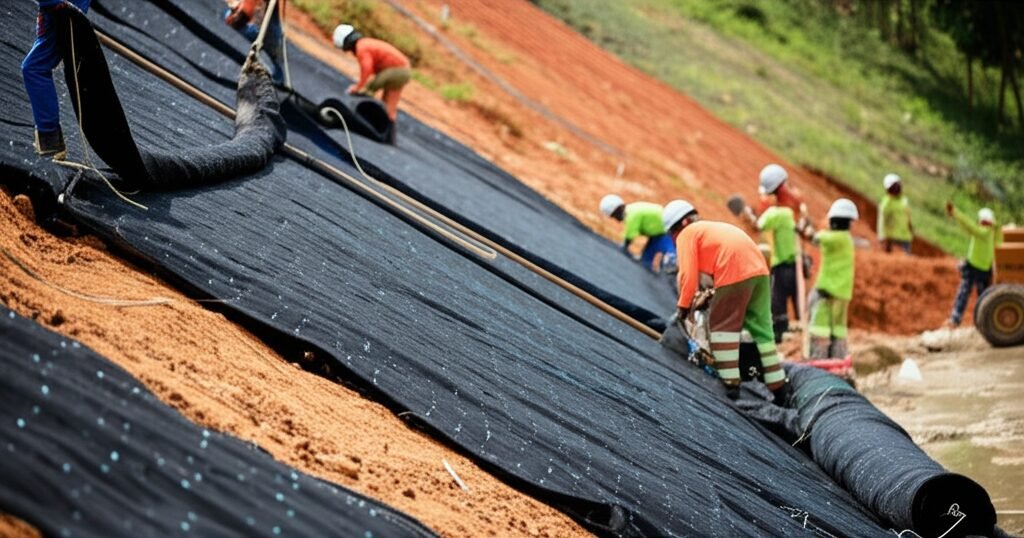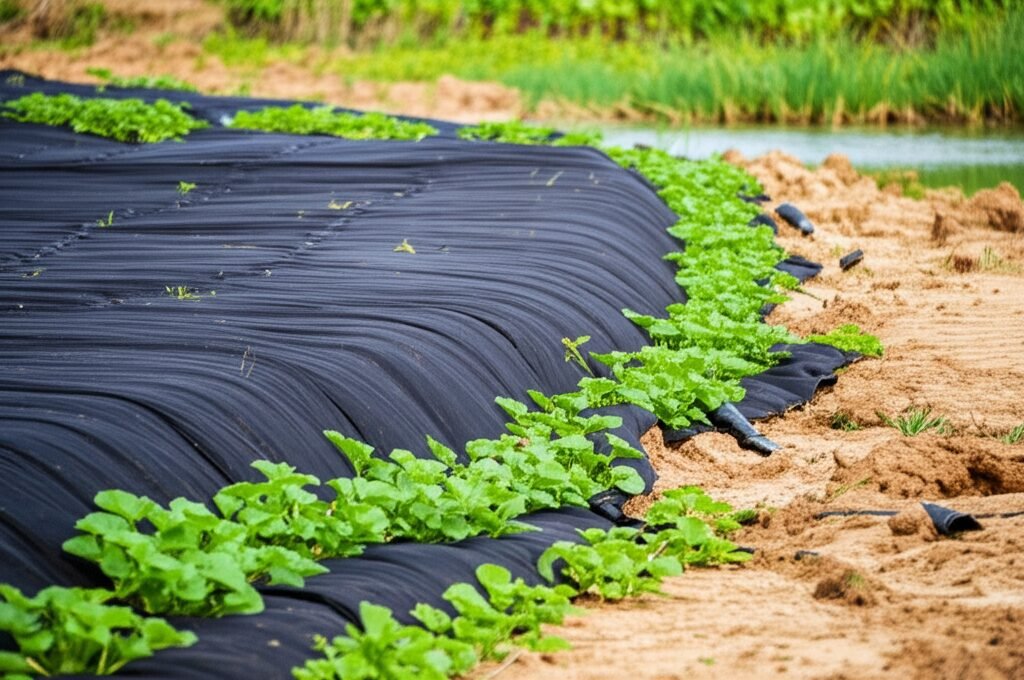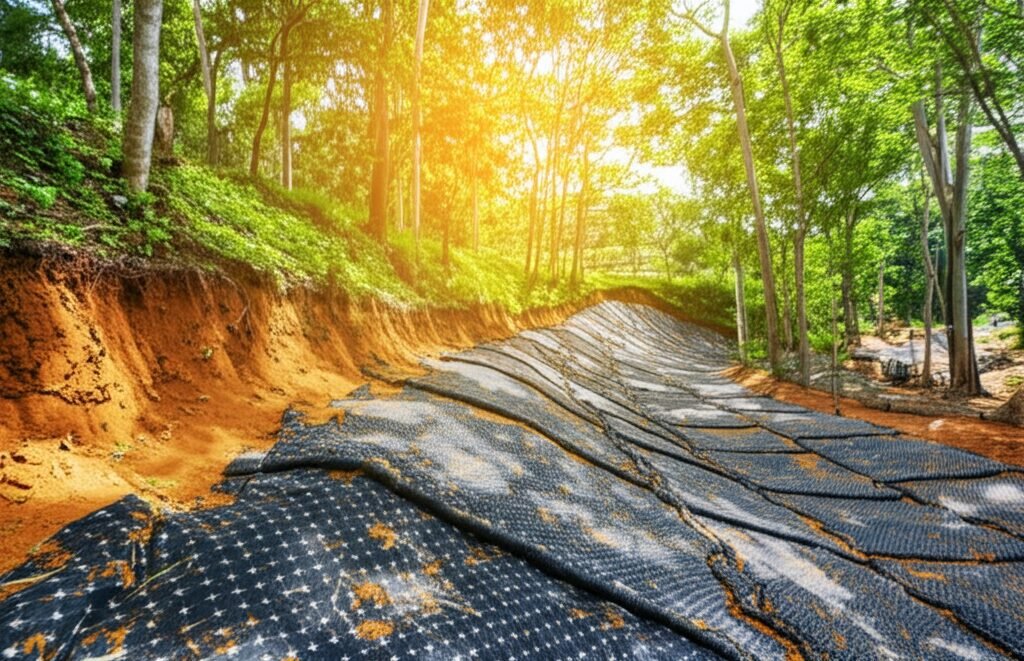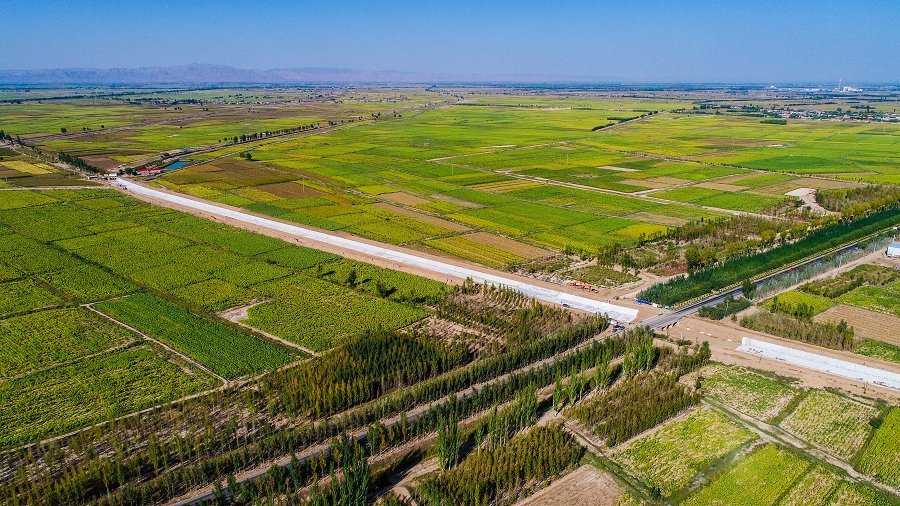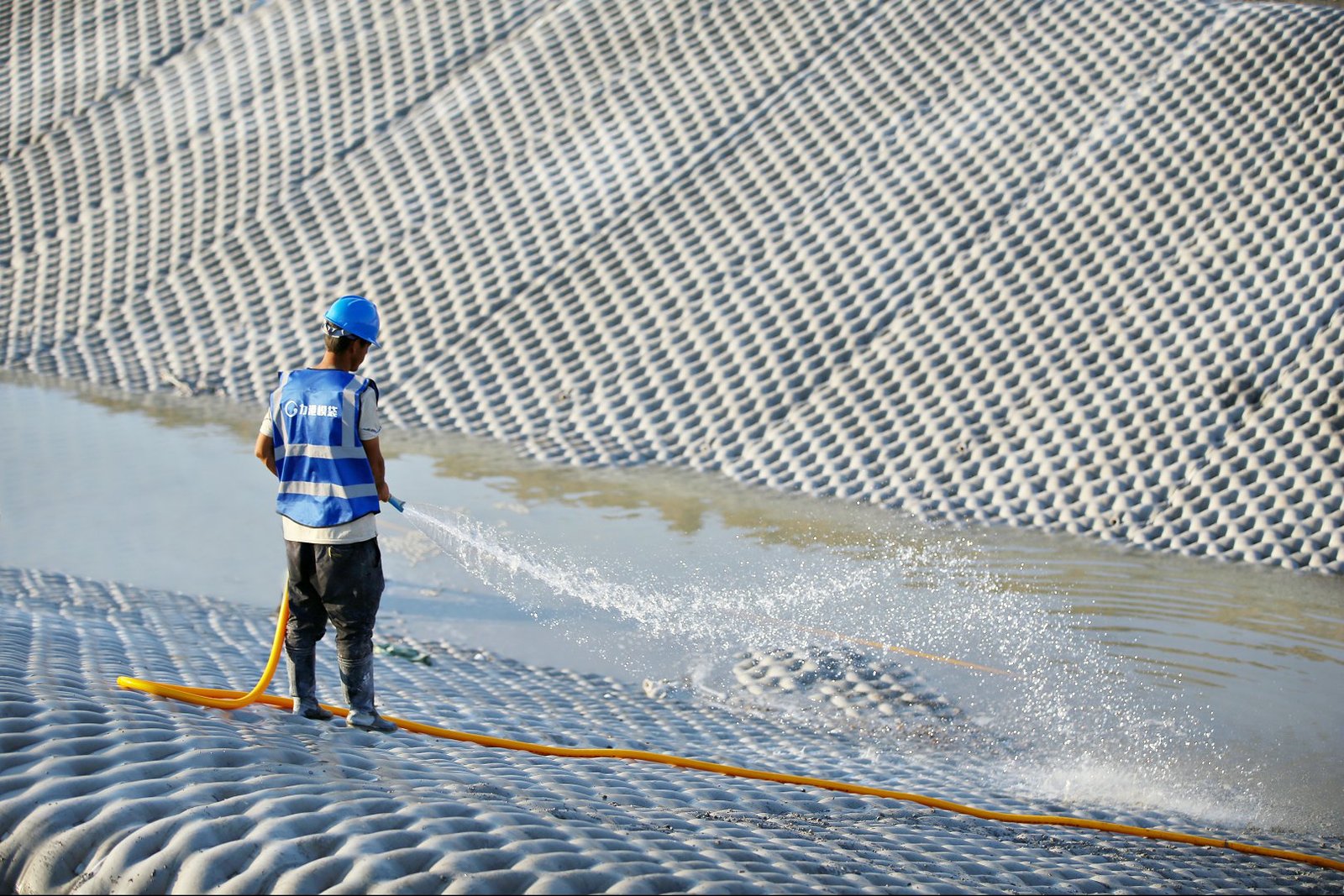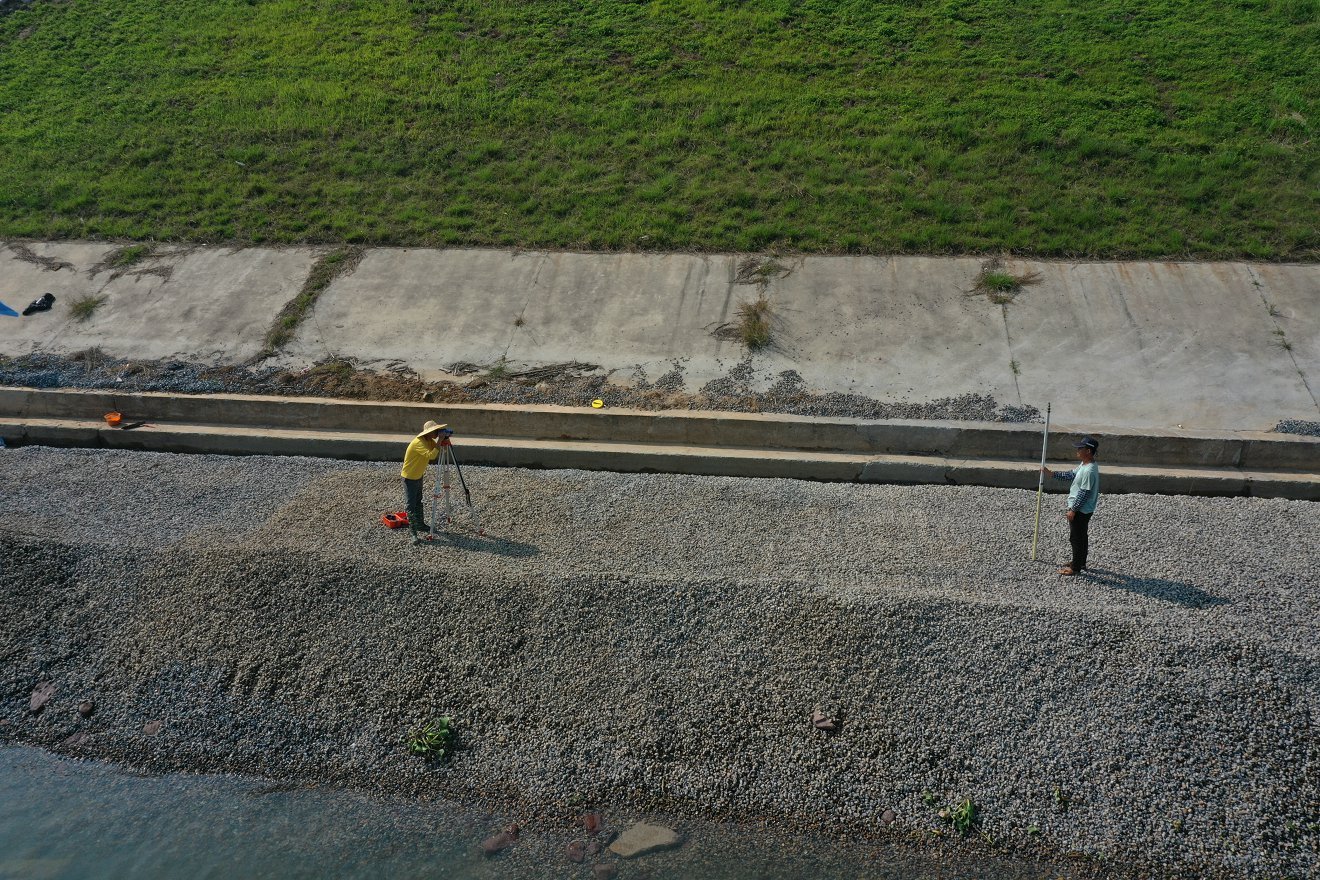Types of Geotextile Fabrics and Properties for Grout-Filled Mattresses
Key Takeaways
- Geotextile fabrics form the ‘bag’ or ‘formwork’ for grout-filled mattresses used in erosion control and infrastructure protection.
- The main types are woven (high strength, low stretch) and non-woven (good filtration, more flexible).
- Fabric choice depends heavily on the application: strength for high-flow areas, permeability for drainage, special properties for vegetation or specific installations.
- Properties like UV resistance, abrasion resistance, and seam strength are critical for long-term performance.
- Specialized systems like Filtration Geotextile Mattresses or Vegetation Geotextile Mattresses use fabrics specifically tailored to their function.
- Innovations like Raised-Pattern Geotextile Mattress Systems can affect grout usage and cost.
- Proper specification and installation, considering the fabric type, are essential for success.
What Exactly Are Geotextile Fabrics in Grout Mattresses?
So, you’ve heard about grout-filled mattresses, right? They’re basically these big fabric containers, kinda like a giant quilt, that get pumped full of grout (a type of concrete mix). They lay ’em down on riverbanks, coastlines, or slopes to stop erosion, protect pipes, or shore stuff up. The real magic, though, starts with the fabric itself – the geotextile. It ain’t just any old cloth; it’s engineered material designed specifically for geotechnical jobs. Think of it as the skeleton and skin all in one. This fabric has to be strong enough to hold tonnes of wet grout without bursting, permeable enough to let water seep out slowly as the grout cures, and durable enough to last for decades out in the weather or underwater. It’s a tall order, really.
The fabric forms the shape of the final mattress. You can get them made into different patterns, like blocks or filter points, which affects how the finished mattress performs and how flexible it is. Choosing the right fabric type is probably one of the most critical steps – get it wrong, and the whole thing might not work as intended, could even fail prematurely. We’re talkin’ about materials that need to handle installation stresses, the pressure of the grout, and then the long-term environmental forces like water flow, UV rays, maybe even boat impacts. These systems that Transform Terrains with Durable Geotextile Mattresses rely completely on that fabric shell doin’ its job right from day one. The whole system is about using the fabric formwork to create a solid, reliable protective layer where you need it most. It’s clever stuff, simple in concept but requires some serious material science know-how.
Woven Geotextiles: The Strong Backbone
When you need sheer muscle, woven geotextiles are often the go-to choice for grout mattresses. These fabrics are made by interlacing yarns, usually synthetic ones like polypropylene or polyester, kinda like how denim is made, but way tougher. The big advantage here is high tensile strength and low elongation. That means they don’t stretch much, even under heavy load. This is super important when you’re pumping in wet, heavy grout – the fabric needs to keep its shape and not bulge or burst. Imagine filling a weak bag with concrete; it wouldn’t end well, eh? Wovens provide that structural integrity needed, especially for mattresses designed as hard armour in places with fast water currents or wave action.
Because they’re tightly woven, their permeability (how easily water passes through) is generally lower than non-wovens. This ain’t necessarily a bad thing. It means the grout’s mix water escapes more slowly, which can sometimes help with proper curing. However, it also means they might not be the best pick if the main goal is drainage through the mattress itself. Their strength makes them ideal for applications covered in guides discussing Advantages and Applications of Geotextile Mattresses in Erosion Control. Think channel linings, bridge scour protection, or coastal revetments where the mattress needs to resist significant hydraulic forces. Some specialized systems, like the Techrevetment formed concrete mattresses, often rely on the dimensional stability that strong woven fabrics provide. You select a woven when you know that thing needs to hold its ground, literally.
Non-Woven Geotextiles: Masters of Filtration and Drainage
Now, let’s talk about the other main player: non-woven geotextiles. Unlike wovens with their neat grid structure, non-wovens are more like a felt or fleece. They’re made by bonding or tangling fibres together, usually using heat or needles (needle-punched is real common). The result is a fabric that’s generally thicker, more flexible, and way more permeable than a typical woven. This high permeability is their superpower. Water can pass through easily, which is brilliant for applications where you need drainage and erosion control. Think about placing a mattress on a slope where groundwater seepage is an issue – a non-woven fabric lets that water pressure escape without building up behind the mattress, which could otherwise cause failure.
They also act as excellent filters. The random fibre structure creates tiny, tortuous paths that let water through but trap soil particles. This prevents the soil underneath from washing away through the mattress, maintaining the stability of the structure. This filtration ability makes them perfect for Advanced Filtration Geotextile Mattress Systems. While they typically have lower tensile strength than wovens, they often have better puncture resistance and conformability – they can stretch and mould better to uneven ground without tearing. This makes installation sometimes a bit easier, especially on complex shapes. Of course, you still need sufficient strength to hold the grout, so it’s always a balance, selecting the right weight and grade of non-woven for the job’s specific demands. It’s not just about filtration; it’s about survivability too.
Special Fabric Features: Thinking ‘Bout UV Resistance and Durability
Choosing between woven and non-woven is just the start, believe me. There’s a whole bunch of other properties you got to consider, especially for long-term success. One huge factor, particularly for mattresses that aren’t buried or constantly underwater, is UV resistance. Sunlight, specifically the ultraviolet part, will degrade many polymers over time, making them brittle and weak. If your mattress is gonna be baking in the sun for years, you need a fabric (often polypropylene or polyester) that’s been specifically manufactured with UV inhibitors mixed in, or maybe a special coating. Without it, the fabric could literally fall apart after a few seasons, exposing the grout and compromising the whole point of the structure. Manufacturers test this stuff rigorously, often following standards like those from the Geosynthetic Institute (e.g., GT16), to make sure it meets specific endurance levels.
Then there’s abrasion resistance. Think about a mattress in a river channel with lots of moving sediment, rocks, or even ice flow. Or maybe it’s near a port with boat traffic. The fabric surface is going to get scraped and worn. Some fabrics handle this better than others. Heavier fabrics, or those made from certain polymers, might offer better abrasion resistance. Puncture resistance is related – you don’t want a sharp rock or installation equipment punching a hole straight through. Chemical resistance can also be key. Is the mattress going into an industrial runoff channel or maybe saltwater? The fabric needs to withstand any chemicals present in the water or soil without degrading. It’s all part of providing Specialized Geotextile Protection for Critical Infrastructure, making sure the fabric chosen matches all the site conditions, not just the obvious ones. You overlook these details, you pay for it later.
Matching Fabric to Function: Filtration vs. Vegetation Systems
The specific type of grout mattress system you’re installing dramatically influences the ideal fabric choice. It ain’t a one-size-fits-all deal. Take Advanced Filtration Geotextile Mattress Systems, for instance. Here, the big goal is allowing water to pass through efficiently while keeping soil particles put. So, you’re almost certainly looking at a non-woven geotextile. The key properties will be its permeability (how fast water flows through) and its Apparent Opening Size (AOS), which relates to the size of particles it can retain. You need an AOS small enough to stop the important soil fines from washing out, but not so small that it clogs up instantly. It’s a fine balance, specific to the soil type on site. The fabric’s structure needs to support these long-term filtration needs without blinding over time.
Contrast that with Advanced Vegetation Geotextile Mattress Systems for Slope Stability. Yes, you still need erosion control, but you also want plants to grow through or on the mattress to provide natural, long-term stabilisation and a greener look. The fabric choice here might lean towards specific types of non-wovens or maybe even composite fabrics that are designed to hold soil and moisture within pockets on the surface, or have openings large enough for roots to penetrate easily once the grout sets. The fabric needs to be durable enough to hold the grout but also conducive to plant life. Sometimes, a biodegradable component might even be incorporated, designed to break down after the vegetation is established. You wouldn’t typically choose a super-strong, low-permeability woven for this, as it wouldn’t support the filtration or vegetation goals nearly as well. The function dictates the fabric form, every single time.
Raised-Pattern Fabrics: A Smart Cost-Saver?
You sometimes see grout mattresses that don’t have just a flat fabric bag, but one with a distinct pattern sewn or bonded into it – these are often what’s meant by Raised-Pattern Geotextile Mattress Systems. This isn’t just for looks; it’s about function and potentially cost. The idea is that the pattern, usually created by internal seams or ties between the top and bottom fabric layers, controls where the grout flows and how thick the mattress becomes in different areas. Instead of one solid slab of grout, you get thicker ‘pillows’ or sections connected by thinner areas along the seam lines.
Why do this? Couple of reasons. First, it can significantly reduce the volume of grout needed compared to filling a uniform-thickness mattress of the same overall size and maximum depth. Grout’s expensive, both the material itself and the pumping operation, so using less can lead to real cost savings, sometimes claimed to be up to 40% in certain scenarios by providers of systems that Cut Costs 40%. Second, the pattern creates flexibility. The thinner sections act like hinges, allowing the mattress to conform better to uneven terrain or settle differentially without cracking like a solid slab might. This articulation is a big plus in many situations. The fabric itself still needs the right properties – strength to hold the grout in the thicker ‘pillows’, permeability appropriate for the site – but the pattern adds another layer of engineering design. It’s a smart way to optimise material use while potentially improving performance, but you gotta make sure the pattern chosen suits the specific erosion forces and site conditions.
Installation Considerations: How Fabric Choice Affects the Job
Picking the right fabric type isn’t just about long-term performance; it directly impacts how easy, or hard, the installation process is. Fabric choice influences everything from handling the empty mattress to filling it with grout. For instance, heavier weight woven fabrics, while strong, can be stiffer and LITERALLY heavier to maneuver into position, especially in large sections or difficult access areas like steep slopes or underwater. Lighter weight non-wovens might be more flexible and easier to handle physically, but you have to be more careful not to damage them during placement. The conformability of non-wovens can be great for uneven ground, but you need to ensure it doesn’t stretch too much during filling.
Seaming is another big one. Large mattress installations often require joining panels of fabric together on site. Different fabrics might require different seaming techniques – sewing, heat welding, stapling. The integrity of these seams is critical; a failed seam during grout filling is a major problem. The type of fabric dictates the best method and the quality control needed. You gotta ensure the seam strength matches the fabric strength specified in the design. This is where clear guidelines, like those discussed in A New Specification for Geotextile Grout-Filled Mattresses, become really important for contractors.
During the actual grouting, the fabric’s permeability plays a role too. Highly permeable fabrics let water escape quickly, which can reduce pressure buildup inside the mattress but might require careful grout mix design to prevent excessive bleed. Lower permeability fabrics hold water longer, potentially affecting curing times. The fabric’s texture might also influence how easily grout flows to fill the entire mattress void. There’s a whole section on practical steps in the Geotextile Mattress Uses, Construction, Benefits & Installation Guide that touches on these points. Basically, the crew installing the mattress needs to understand the properties of the specific fabric they’re working with to avoid costly mistakes.
Learning from Experience: Real-World Fabric Performance
Theory and lab tests are one thing, but how these fabrics actually hold up in the field, year after year, that’s where the real learning happens. Looking at Proven Geotextile Mattress Projects for Water Infrastructure gives you invaluable insight. I remember one project on a river bend where we initially considered a standard woven fabric based purely on flow velocity calculations. But talking to folks who’d worked similar sites, we learned about issues with abrasion from coarse, sharp sediment that wasn’t captured in the initial surveys. We switched to a heavier-duty non-woven, which had slightly lower tensile strength but way better puncture and abrasion resistance. That decision likely saved a costly repair job down the line. Experience tells you what the spec sheets sometimes can’t.
Case histories, like studies on Coastal Protection Structures, often highlight unexpected challenges. Maybe UV degradation was faster than anticipated in a particular location due to reflective surroundings, or perhaps marine growth attached differently to various fabric types, affecting permeability. Sometimes installation damage, little nicks and tears that seemed minor, become bigger issues over time if the fabric chosen doesn’t have good tear propagation resistance. This is why working with experienced suppliers and designers, like those you might find when seeking Expert Geotextile Mattress Solutions for Erosion Control, is so critical. People like Li Gang: Expert Geotextile Mattress Manufacturing Leader spend their careers understanding these nuances. They’ve seen what works and what doesn’t across countless real-world scenarios. That practical knowledge, supplementing the technical data, is how you really nail the right fabric selection for truly durable, effective grout mattress systems. You learn to anticipate problems based on past experiences, somethin’ no textbook alone can teach ya.
Frequently Asked Questions (FAQs)
Q1: What are the main types of geotextile fabrics used in grout mattresses?
A1: The two primary types are woven geotextiles, known for high strength and low stretch, and non-woven geotextiles, valued for their high permeability, filtration capabilities, and flexibility. The choice depends heavily on the project’s specific needs like required strength, drainage, or soil retention.
Q2: Why is fabric permeability important for grout-filled mattresses?
A2: Permeability is crucial for two main reasons. First, it allows excess mix water from the grout to escape as it cures, which helps the grout achieve its proper strength and density. Second, in many applications, especially those involving soil slopes or retaining structures, the fabric’s permeability allows groundwater to pass through the mattress, preventing hydrostatic pressure buildup behind it, which could otherwise lead to instability. Advanced Filtration Geotextile Mattress Systems rely heavily on this property.
Q3: Can geotextile mattresses support vegetation?
A3: Yes, specialized mattresses are designed for this. Advanced Vegetation Geotextile Mattress Systems for Slope Stability often use specific non-woven fabrics or composite materials with pockets or openings designed to hold soil and allow plant roots to establish, creating a ‘green’ erosion control solution.
Q4: What makes ‘raised-pattern’ geotextile mattresses different?
A4: Raised-Pattern Geotextile Mattress Systems have internal seams or ties that create a pattern of thick ‘pillows’ connected by thinner sections when filled with grout. This design can reduce the total volume of grout needed (saving costs) and increases the mattress’s flexibility, allowing it to conform better to uneven ground compared to a uniformly thick slab.
Q5: How long do geotextile fabrics in grout mattresses last?
A5: When properly selected for the site conditions (considering factors like UV exposure, abrasion, chemical environment) and correctly installed, high-quality geotextile fabrics used in grout mattresses are designed to last for decades. UV inhibitors, appropriate polymer types (like polypropylene or polyester), and sufficient fabric weight contribute to long-term durability for Specialized Geotextile Protection for Critical Infrastructure.
Q6: Are woven or non-woven geotextiles stronger?
A6: Generally, woven geotextiles offer higher tensile strength (resistance to pulling forces) for a given weight compared to non-wovens. This makes them suitable for applications requiring significant structural integrity. However, non-wovens often have better puncture resistance and elongation (stretchability) properties. The ‘best’ choice balances the specific strength and durability requirements of the project site.


